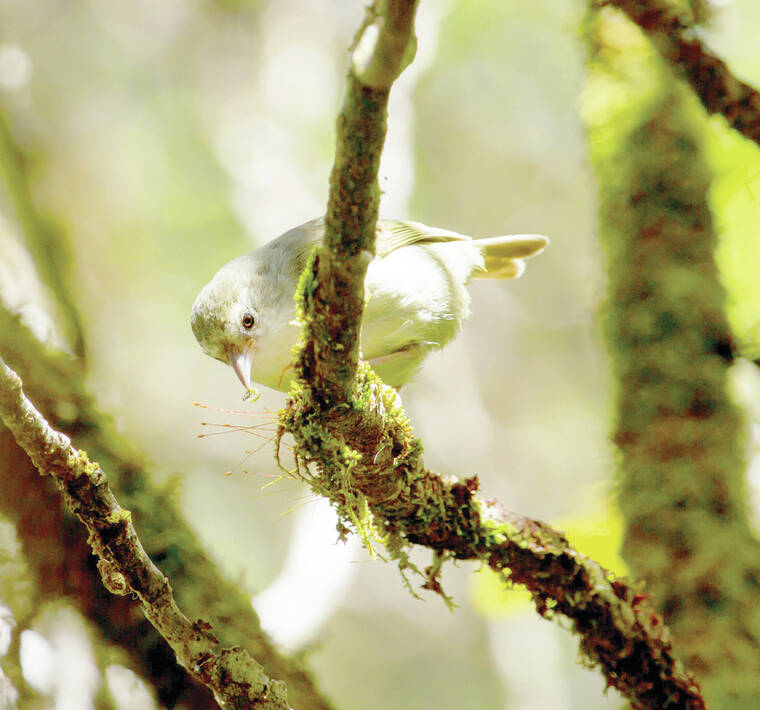LIHU‘E — The Kaua‘i County Council approved a resolution supporting biological control efforts to protect endangered Hawaiian honeycreepers from mosquito-borne disease.
The resolution passed 6-1 on Wednesday, with Council Member Billy DeCosta in lone opposition.
Invasive southern house mosquitoes carrying avian malaria pose the greatest threat to Hawaiian forest bird species, according to the U.S. Department of the Interior. While native honeycreepers could once be found across the island, the birds are now only found at higher, cooler elevations, as the mosquitoes can’t withstand the colder temperatures.
But as climate change increases air temperatures, mosquitoes continue to creep into what little safe habitat is left, further threatening the forest birds’ already dwindling numbers.
“They are literally dropping like flies before our very eyes,” said Kaua‘i Forest Bird Recovery Project head Lisa Crampton during the council meeting. “We go out one day and the pair that’s laid a nest are gone, and the eggs in the nest are cold. It’s happening so fast. We walk down the trails, and we find ‘apapane are now littering our trails with their corpses. It is an emergency, and it’s all caused by these introduced mosquitoes.”
Two of Kaua‘i’s honeycreepers (‘akeke‘e and ‘akikiki), as well as Maui’s kiwikiu and ‘akohekoe, are in danger of extinction in as
little as one to two years, according to the Department of the Interior. Additionally, eight other forest bird species risk extinction if no action is taken.
To protect these birds, which hold great ecological and cultural significance, the department announced in December 2022 a multiagency, multimillion-dollar strategy involving captive care, relocation to neighbor islands and, most critically, biological control using a bacterium called Wolbachia.
While Wolbachia has no impact on humans, mosquitoes carrying distinct Wolbachia strains are unable to create viable eggs, limiting new births and suppressing the mosquito population over time. To take advantage of this, the DOI plans to release lab-infected male mosquitoes — which don’t bite — into the forest birds’ habitat to cut down on the possibility of malaria infection.
While this would mark the first time Wolbachia is used for conservation purposes, the bacterium has been utilized across the globe for decades to protect the public against Dengue, Zika and other viruses.
“It’s currently being used in at least 10 countries, as well as now in the continental U.S.,” said U.S. Fish and Wildlife Service Invasive Species Biologist Joshua Fisher. “There is a substantial body of data that demonstrates that the method is safe, targeted, and will not result in any adverse effects to humans or the environment.”
Fisher added while Wolbachia efforts on Maui are now shifting from planning to implementation, Kaua‘i’s status is further behind.
“The environmental review process, which is ongoing, needs to be completed with the opportunity for the public to review and provide comment,” Fisher said. “We’re expecting that to occur sometime this summer. The dates are still to be determined.”
Still, he expressed optimism that the project would eventually be successful.
“I’m just incredibly encouraged by the prospect of being able to finally do something for these birds that have been, really, in a dire strait, and really restricted to the upper reaches of these islands for so long,” he said.
•••
Jackson Healy, reporter, can be reached at 808-647-4966 or jhealy@thegardenisland.com.


